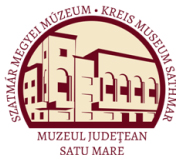Marta, Liviu: The Late Bronze Age Settlements of Petea-Csengersima (Satu Mare, 2009)
IV. Habitation of the Lăpuş II-Gáva I Archaeological Culture
IV.6. Activities in the Settlement The economic activities undertaken within the Lăpuş II-Gáva I setdement at Petea— Csengersima are faindy attested. Grain cultivation can be deduced from the chaff imprints and that of straw preserved by the burnt walls of dwellings or from the presence of storage pits and of grinders. Although only a small number of bones was preserved, the activity of breeding animals is attested with bones of bovidae, pigs and horses (Lăpuş II—Gáva I habitation). The only craft about which there are indications to have been performed within the settlement is weaving. This is documented by the numerous clay weights found in the settlement. The presence of a large group of such weights within ritual pit SI4 complex 5 can be a further indication in this sense. The absence of moulds from the settlement at Petea—Csengersima does not offer clues about the metallurgy carried out in the settlement. Thus, in the case of the majority of bronze pieces it cannot be said with certainty if these were imported or made in the settlement. The presence of moulds dated in the Ha A1 period in the area of the Someş Plain clearly attests the intense practice of metallurgy in this plain inhabited by the Lăpuş II — Gáva I communities. The metal used for the casting of the pieces was certainly imported. An imported material was also the stone used to the making of grinders found in great numbers in the settlement at Petea—Csengersima. The foreign objects found in the settlement (two vessels and a knife) offer information about the inter-cultural relations (possibly trade) of the settlement. The found objects are situated along certain important routes of some clay vessels or some bronze pieces. The points of discovery of the latter are believed to mark possible commercial routes. The two vessel fragments having close affinities with the Igriţa group or with the finds from the region of Banat are considered to be in relation with a longer circulation route of certain objects (PI. 5/2, 14/5). These two vessels alongside with other vessels found in the region of the Upper Tisa596 link the pottery from the south of the Carpathian region and the imports that originated here and that had been found in the south of Poland59 . The Baierdorf type bronze knife from the settlement (PI. 39/13), together with discovery sites lined between Transylvania and the south-west area of the Baltic Sea, also indicates long distance intercultural relations (Fig. 29). These discovery points are found along a route on which other bronze discoveries are also present linking, in the period between the Middle Bronze Age and the HaB period, the western coast of the Baltic Sea with Transylvania598. The circulation on this route of Fuchsstadt type cups, of helmets, of phalerae599, bracelets and rings with spiralled ends6"" or of fibulae of Bohdalice and Gemainlebarn types601 was considered of the HaA period. The existence of areas of concentrations of pieces on the circulation route of Gemainlebarn/ Bohdalice type fibulae are considered as marking some kind of stations along a possible trade route602. It can be observed that on the route between the Baltic Sea and Transylvania the way in which the Baierdorf type knives are spread is identical with that of Gemailebarn type fibulae and partially those of Bohdalice type. Virtually the same concentration areas are present, Baierdorf type knives marking out in a better manner the route between them. The 596 Zatlukál — Zatlukál 1937, pl. 21; Németi 1990, p. 41, fig 13/3; V. Szabó 2004, pl. 10/2. 597 Przibila 2005, p. 219-225, abb. 2-7 and map of spatial distribution (abb. 8) 598 Werner 1952, p. 293-308; Sprockhoff 1954, p. 28-110; Hachmann 1957, p. 163-180; Thrane 1966, p. 157 207; Thrane 1978, p. 1-35; Jakob 1995, p. 189-190; Soroceanu 1996, p. 272-276. 599 Thrane 1966, p. 157-171. 600 Schulz - Plate 1983, p. 41-48. 601 Bader 1983, p. 34-35, p. 36-38; taf 46 (map of spatial distribution). 61)2 Soroceanu 1996, p. 273-274. 85
